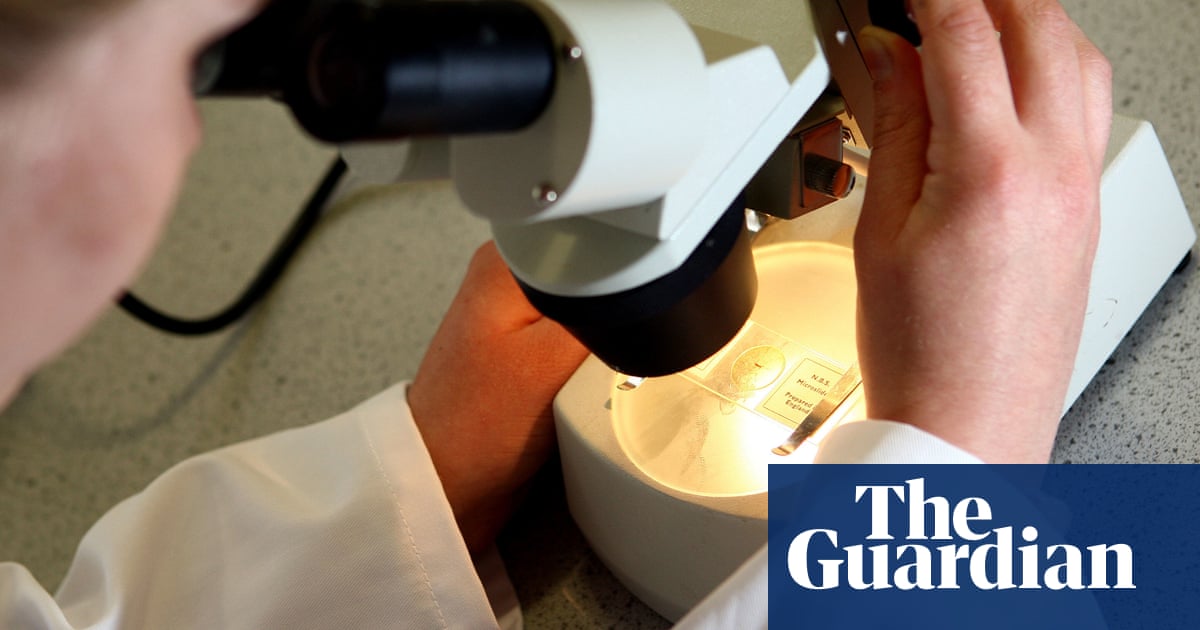
Legacy aerospace giants scored a win Tuesday when the U.S. Senate passed President Trump’s budget reconciliation bill that earmarks billions more for NASA’s flagship Artemis program.
The $10 billion addition to the Artemis architecture, which includes funding for additional Space Launch System rockets and an orbiting station around the moon called Gateway, is a rebuke to critics who wished to see alternative technologies used instead. Among those critics are SpaceX CEO Elon Musk and billionaire entrepreneur Jared Isaacman, who Musk proposed as the next NASA Administrator.
There’s no sign the souring relations between Musk and Trump are recovering. If Trump signs the bill, the fallout, which began after the President’s abrupt recension of Isaacman’s nomination, will likely continue — if not accelerate.
Musk in particular has taken aim at the Space Launch System rocket on the grounds that it is fully expendable. Unlike SpaceX’s family of rockets, which are all designed to be reusable, SLS is one-time use only. As Musk put it back in 2020, that means “a billion dollar rocket is blown up” every time it is launched. Even that may have been an understatement; more recent figures from NASA’s watchdog put recurring production costs closer to $2.5 billion each.
A total of around $24 billion has been poured into SLS production to date, funds that have primarily gone to a consortium of aerospace primes, including Boeing, L3Harris’ Aerojet Rocketdyne, and Northrop Grumman, which leads construction of the major rocket components.
During his recent confirmation hearings with the Senate, Isaacman questioned the massive sums. He affirmed using SLS for the next two Artemis missions, but ultimately said he didn’t think the rocket was “the long‑term way to get to and from the Moon and to Mars with great frequency.”
Congress — and Trump, if he decides to sign the bill into law — have decided to press ahead. Around $4.1 billion of the $10 billion total added to the document will go toward additional SLS rockets for Artemis missions 4 and 5. Meanwhile, around $2.6 billion will go toward completion of the Gateway station.
Notably, the President’s fiscal year budget request for NASA submitted in May proposed to “phase out the Space Launch System and Orion spacecraft after the Artemis III mission is complete.” This new funding flies in the face of that proposal, which was submitted before Musk and Trump’s public fallout in June.
The new funding includes $700 million for a new Mars Telecommunications Orbiter, $1.25 billion for additional operation of the International Space Station, and $325 million to SpaceX for the development of a spacecraft to deorbit the ISS at the end of the decade. (The total award for that deorbit spacecraft is $843 million.)

Some chemotherapy drugs cause more damage to healthy cells than other chemo options do, a new study finds.
The researchers have found four new mutational signatures — patterns of DNA damage left by certain classes of drug — linked to chemotherapy. They also pinpointed some medications that can even “artificially age” healthy blood cells via these mutations.
The findings, published Tuesday (July 1) in the journal Nature Genetics, could help doctors select cancer treatments that cause minimal knock-on damage to patients’ bodies while still attacking their cancer, the scientists say.
Some cancer chemotherapy medications destroy rapidly dividing cells by damaging their DNA, triggering cell death. While cancer cells fit that description, there are also healthy cells that divide quickly, such as those found in bone marrow and blood. This new study aimed to find out how chemo impacts those healthy cells and to do so in unprecedented detail.
The research team compared the blood of 23 people, ages 3 to 80, who were previously treated with chemotherapy with the blood of nine subjects without histories of cancer or chemo. Collectively, the people in the chemo group had received 21 different therapies, including platinum and alkylating agents, which kill cancer cells by damaging their DNA.
The team isolated blood stem cells and mature blood cells from the groups. They extracted DNA from the cells and put them through whole-genome sequencing. Using mathematical models, they pinpointed a number of mutational signatures in each cell’s DNA, four of which had never before been reported to the COSMIC database of mutational signatures and are heavily suspected to be caused by chemo.
Related: Some early-onset cancers are on the rise. Why?
Although some of the signatures were present in samples from both the cancer-free and chemo-treated groups, 11 appeared only in the chemo group. That included the four new signatures.
But interestingly, not all medications within the chemo group caused the same degree of mutational burden. For example, the team found that cyclophosphamide, which is used to treat cancers such as multiple myeloma and breast cancer, causes far fewer mutations than others in its class.
More mutations mean a higher risk of getting another kind of cancer after treatment, called a secondary tumor. “The risk of secondary malignancy with cyclophosphamide is known to be lower” than with other drugs of its class, first study author Dr. Emily Mitchell, a hematologist and researcher at the Wellcome Sanger Institute and a clinician at Cambridge University Hospital, told Live Science in an email. That said, the risk is not zero.
Cancer is caused by mutations that lead to uncontrolled cell growth. But genetic mutations, in general, are also linked to aging.
“Each cell in our body accumulates mutations over time in a constant fashion,” said Dr. Francesco Maura, a hematologist and researcher at Memorial Sloan Kettering Cancer Center in New York City who was not involved in the study. When chemo introduces mutations to blood cells, particularly blood stem cells, he said, “it doesn’t necessarily mean the stem cell is aged; you just have more mutations.” These chemo-induced mutations carry the same risk as age-related mutations, though — that is, their accumulation raises the risk of cancer.
Among the study participants, there was a 3-year-old who had chemo that carried 10 times the number of mutations in his blood than healthy, untreated kids his age. The toddler’s blood cells looked older than those of an 80-year-old study participant who had never had chemo. But while mutation buildup makes cells look older, it doesn’t always lead to tumor growth — just as not everyone who ages gets cancer.
The study had limitations, such as its small sample size. The researchers conceded that studying blood in test tubes could have skewed the results, because it doesn’t fully recreate the human body’s environment. Mitchell said her group would like to run similar experiments with a larger cohort and with circulating blood, but there are no plans to do so immediately.
Mitchell pointed to her and her colleagues’ work published in 2024 in the journal The Lancet Oncology as an example of where this sort of research could go. They’d demonstrated that an alternative chemo combination for Hodgkin lymphoma worked just as well as the standard option while causing fewer knock-on mutations.
Hodgkin lymphoma has a high cure rate of more than 80%, but for other types of cancers with lower cure rates, applying this approach may be more challenging. Additionally, secondary tumors take years to develop, so people need to survive for some time following their initial treatment to encounter them. Optimizing their initial chemo drugs to minimize mutations wouldn’t be helpful if the survival rates for their cancer aren’t high.
In Maura’s words, “first, you have to cure [that type of] cancer. Then you work toward reducing the toxicity of the treatment.”
This article is for informational purposes only and is not meant to offer medical advice.

Routine cervical screening should be offered to women aged 65 and over as they are still at heightened risk of cancer from human papillomavirus (HPV), according to research.
Despite it being a preventable disease, there were about 660,000 cases of cervical cancer and 350,000 deaths from it worldwide in 2022, according to the World Health Organization (WHO).
HPV is responsible for about 95% of cervical cancer, which occurs when abnormal cells develop in the lining of the cervix and grow, eventually forming a tumour.
WHO’s global strategy on cervical cancer states that by 2030, all countries should vaccinate 90% of girls with the HPV vaccine by 15, screen 70% of women and treat 90% of those with cervical disease. Modelling suggests this would prevent 62m deaths and a cumulative 74m new cases of cervical cancer by 2120.
Screening programmes vary from country to country, but most guidelines recommend stopping cervical screening after the age of 65 if previous test results have been normal.
Yet global cases of cervical cancer among people over 65 have been rising: in 2022, worldwide there were 157,182 new cases and 124,269 deaths from the disease among women aged 65 or older.
In the UK, while screening and vaccination rates are higher than many other countries, they have been falling in recent years. Cervical cancer leads to approximately 685 deaths a year in England alone.
Now a large-scale observational study published in Gynecology and Obstetrics Clinical Medicine has found that older women are more likely to have HPV infections and to have abnormal cells in test results than younger women.
Researchers in China analysed cervical cancer screening data for more than 2 million women between 2017 and 2023. Of the 2 million, 17,420 were aged 65 and above; the remainder were younger.
The study found greater prevalence of high-risk HPV infections and abnormal cells among women aged 65 and over than in younger women. Nearly 14% of those 65 and over tested positive for high-risk HPV infection types, compared with 8% of those who were younger.
Older women were also more likely to be infected with several different types of HPV and have abnormalities picked up on screening.
While acknowledging limitations to the study, the findings indicate that “women [aged 65 and above] are a high-risk group for cervical cancer incidence and mortality, necessitating urgent attention from countries worldwide”, the authors conclude.
“Most guidelines suggest stopping screening for those with adequate primary screening and no high-risk factors, particularly for women under 65,” they say. “However, the situation differs for those over 65, who may not have been vaccinated or thoroughly screened. With increasing life expectancy, the risk of cervical cancer in this demographic is significantly heightened.”
Responding to the findings, Athena Lamnisos, chief executive of the Eve Appeal cancer charity, said among people over 65, “there is a largely unvaccinated population who, if under-screened or if they have never attended screening, may well still be at high risk of cervical cancer”.
“We would look to the National Screening Committee to examine the findings and see if there would be benefits in reviewing screening age.”
Maxine Lenza, health information manager at Cancer Research UK, said: “Recent improvements to the test in the UK means it’s an extremely effective way of preventing cervical cancer and saving lives, so those over the age of 65 and up to date with their cervical screening will have a very low risk of developing the disease. However, women over 65 who have never had cervical screening can request a test with their GP practice.”
An NHS spokesperson said: “The NHS cervical screening programme in England follows expert recommendations on age and frequency of screening by the UK National Screening Committee, which are based on regular reviews of the best evidence globally.
“Women with an HPV-positive screening result at the age of 65 are invited for additional screening to monitor their ongoing risk and we would encourage all women to attend appointments when invited to ensure they have the best protection against cervical cancer.”
A Department of Health and Social Care spokesperson said: “The screening age brackets are based on robust scientific evidence and an expert recommendation from the UK National Screening Committee, however any women who are worried about their symptoms can speak to their GP who will decide the best course of action.
“It is vital that we increase the number of women accepting their invitation for cervical cancer screening within the existing age bracket. As part of our 10-year health plan, those who are eligible will be offered convenient human papillomavirus self-sampling kits – breaking down barriers to healthcare as we shift from treatment to prevention.”

Warner Music Group will lay off an unspecified number of employees as part of a months-long restructuring plan to cut costs, Chief Executive Robert Kyncl said in a memo to staff Tuesday.
Kyncl said in the memo that the plan to “future-proof” the company includes reducing annual costs by roughly $300 million, with $170 million of that coming from “headcount rightsizing for agility and impact.” The additional $130 million in costs will come from administrative and real estate expenses, he said.
The cuts are the “remaining steps” of a period of significant change at the company, Kyncl said, with previous rounds of layoffs and leadership switch-ups happening in the last two years as he worked to “transform” the company.
“I know that this news is tough and unsettling, and you will have many questions. The Executive Leadership Team has spent a lot of time thinking about our future state and how to put us on the best path forward,” Kyncl said in the internal memo that was reviewed by The Times. “These decisions are not being made lightly, it will be difficult to say goodbye to talented people, and we’re committed to acting with empathy and integrity.”
It’s unclear how many employees will be laid off or what departments will see cuts, but Kyncl emphasized the company will be focused on increasing investments in its artists and repertoire department and mergers and acquisitions.
Hours before the news of layoffs, the company announced a $1.2-billion joint venture with Bain Capital to invest in music catalogs. The collaboration will add to the company’s catalog-purchasing power across both recorded music and music publishing, Kyncl said.
“In an ever-changing industry, we must continue to supercharge our capabilities in long-term artist, songwriter, and catalog development,” he wrote. “That’s why this company was created in the first place, it’s what we’ve always been best at, and it’s how we’ll differentiate ourselves in the future.”
In 2024, Warner Music laid off 600 employees, or approximately 10% of its workforce, and in 2023, 270 jobs were cut.
Warner Music Group shares closed at $27.83, up 2.17%, on Tuesday.

The University of Pennsylvania has agreed to block transgender athletes from competing in women’s sports after a federal civil rights investigation stemming from swimmer Lia Thomas.
The US Department of Education announced the agreement and said the Ivy League university would apologise and restore titles and records to female athletes in events that were “misappropriated by male athletes”.
The university said it would update its records set during Ms Thomas’ season to “indicate who would now hold the records under current eligibility guidelines”, but it did not say whether her records would be erased.
Thomas became the first transgender athlete to win the highest US national college title in March 2022.

(Paris, France, Wednesday, 2 July 2025) New research presented today at the 41st Annual Meeting of the European Society of Human Reproduction and Embryology (ESHRE) reveals the presence of microplastics in human reproductive fluids, raising important questions about their potential risks to fertility and reproductive health.[1]
Researchers examined follicular fluid from 29 women and seminal fluid from 22 men, both of which play critical roles in natural conception and assisted reproduction.
A range of commonly used microplastic polymers, including polytetrafluoroethylene (PTFE), polystyrene (PS), polyethylene terephthalate (PET), polyamide (PA), polypropylene (PP) and polyurethane (PU), were identified in both groups.
Microplastics were present in 69% of the follicular fluid samples analysed. Notably, the most frequently detected polymer was PTFE, found in 31% of the samples. This was followed by PP (28%), PET (17%), PA (14%), polyethylene (PE) (10%), PU (10%) and PS (7%), in descending order of prevalence.
In male seminal fluid samples, microplastics were found in 55% of those analysed. PTFE again emerged as the most prevalent polymer, identified in 41% of the samples. Other polymers detected included PS (14%), PET (9%), PA (5%), and PU (5%), though in lower concentrations.
To prevent contamination, all samples were collected and stored in glass containers and underwent chemical treatment before analysis using laser direct infrared microscopy.
Lead researcher Dr. Emilio Gomez-Sanchez commented, “Previous studies had already shown that microplastics can be found in various human organs. As a result, we weren´t entirely surprised to find microplastics in fluids of the human reproductive system, but we were struck by how common they were – found in 69% of the women and 55% of the men we studied.”
Microplastics are defined as plastic particles under 5mm in size, and there is evidence that they pose a threat to environmental and public health.[2] While this research did not directly assess how microplastics affect fertility, their detection highlights the need to explore possible implications for human reproductive health.
“What we know from animal studies is that in the tissues where microplastics accumulate, they can induce inflammation, free radical formation, DNA damage, cellular senescence, and endocrine disruptions”, continued Dr. Gomez-Sanchez. “It’s possible they could impair egg or sperm quality in humans, but we don’t yet have enough evidence to confirm that.”
The research team plans to expand their analysis to a larger cohort, alongside detailed lifestyle and environmental exposure questionnaires. Further phases of the project will also explore the potential relationship between the presence of microplastics and oocyte and sperm quality.
Dr. Gomez-Sanchez stressed that fertility is influenced by many factors, including age, health, and genetics, and that the findings should not cause alarm among those trying to conceive. “There’s no need for alarm at this point. Microplastics are just one of many elements that may play a role in fertility. However, it is sensible to consider ways of reducing our exposure to them. Simple steps, such as using glass containers to store and heat food, or limiting the amount of water we consume from plastic bottles, can help minimise our intake.”
Professor Dr. Carlos Calhaz-Jorge, Immediate Past Chair of ESHRE, commented, “Environmental factors influencing reproduction are certainly a reality, although not easy to measure objectively. The authors of this study found microplastics in over two-thirds of follicular fluids and more than 50% of semen fluids from the studied patients. Although the significance of these findings is not yet clear, they should be considered an additional argument in favour of avoiding the generalised use of plastics in our daily lives.”
The study abstract will be published today in Human Reproduction, one of the world’s leading reproductive medicine journals.